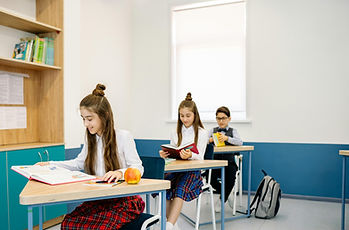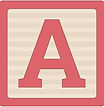Background

Over the years, Canada's education system has come a long way in recognizing that individual students have a variety of individual needs that in many instances require a unique and tailored solution for individual students. Despite the incredible evolution of individual education plans (IEPs), specialized resources in schools and leaders in education supporting these initiatives, very little has been done to recognize and support the unique needs of multiple birth families.
Families of multiple birth children have often contended with school policies and decisions made particularly around class placement without proper supporting research and analysis. Studies done on this topic all point to the clear conclusion that there is not one prescribed solution to class placement for multiple birth children. The success of multiple-birth students requires the active participation and input of all stakeholders, including families and educators to make the decision that best suits each pair, group and individual.

What Educators, Families & Supporters Can Do
Education is a collaborative effort that involves not just teachers and students, but also parents, guardians, and other family members. When families are actively engaged in the educational process and class placement decisions, students are more likely to thrive and succeed. By being involved in their children's education, families can provide valuable insights, support, and encouragement that can have a lasting impact on academic achievement and overall well-being.
In order to truly meet the diverse needs of our community's students, it is essential that families are present at the table when important decisions regarding education choices and class placement are being made.


We are Multiple Births Canada, a registered Canadian charity dedicated to connecting a community of families, educators, researchers and health professionals in Canada with a personal or professional interest in the well-being of multiple birth children and those who care for them.


Take Action
We would like to ask you to review the ensuing information and take action in providing better solutions for multiple birth families in the school environment when it comes to class placement and any school-related decisions that may impact the individual and family unit.
What You Need To Know
In this information package, you will find the following:

The results of ICOMBO’s study were published on their website and can be found here.

Monica Rankin, B.Sc., Grad Dip.Ed., ICOMBO Past Chair
“It is important to assess each child’s development and needs from year to year. To have a firm policy of separation or not denies the individual growth of each child and how their bond may or may not affect their ability to concentrate and learn. This is why ICOMBO is asking our members to reach out to decision-makers and promote the resources we have available to help when making these crucial decisions.”

Multiple Births Canada is a proud member of the International Council of Multiple Births Organisations (ICOMBO), which conducted a study in 2019 on school placement of multiple births.
ICOMBO Recommendations Regarding Classroom Placement
-
It is not recommended to separate multiples who want to be together. Forced separation can damage self-esteem, inhibit language development and delay learning.
-
It is not recommended to automatically separate multiples in their first year of school. Such separation adds to the stress of starting school, and may actually increase the multiples’ need to be together.
-
All multiples need as much independence as they are ready to handle. Multiples flourish when allowed to separate on their own timetable. Whether they are in the same classroom or not can and should be evaluated each year. As the multiples grow older, they themselves will also have input as to whether or not they should or want to be together.
-
Encourage multiples to choose separate classes as they gain confidence in the school situation.
-
Decisions as to whether or not the children should be together needs to be made by a ‘team’ approach – the parents, the teachers and the principal. Educators need to realise that parents know their children best, and it is important, for any easy transition to school and the development of the children, that parental opinion be considered.
-
If multiples are in the same classroom, they can be in separate settings within the class.
-
Especially if children look alike, make it easy on the teachers and students to dress them differently so that they are easily recognised and seen as individuals.
-
Parent/Teacher interviews need to reflect how each child is progressing compared to the rest of the class, rather than in comparison with each other.
-
Parents may need to indicate that they would like separate parent/teacher interviews for each child. Sometimes teachers expect one interview to talk about all the multiples together, and that can be confusing and perhaps not fair to the children since it is more natural in that environment for comparisons to be about the children in relation to each other rather than to their peer group.
ICOMBO & Multiple Births Canada strongly recommends that placement of each of multiples be evaluated on a case-by-case basis, that placement evaluation occurs annually, and that parents, teachers, administrators and the children be included in the decision-making.


Multiple Birth Families Rights in Education in Canada Survey
Conducted by Multiple Births Canada in Winter 2024

-
A survey was sent out across Canada by MBC and received 44 responses from multiple birth families across Ontario, Alberta, Manitoba and other provinces.
-
Experiences varied regarding input in class placement decisions - some parents had to be proactive contacting teachers and administrators, others were asked for input
-
Two thirds of respondents had some or most of their primary school years together, which provided comfort to the children and was easiest for the parents
-
most fared well or better together, however, sometimes parents felt they were too competitive or had different needs in the same classroom
-
-
For children who were separate, most thrived, though some struggled and missed their twin.
-
Pros of separation: less comparison, more independence, less competitiveness in class, proper evaluation by the teacher
-
Cons of separation: more competitiveness between classes and comparison of class expectations/fairness
-
-
It is clear that parents of multiples want input into class placement to suit the individual and collective needs of their children.


Source: Multiple Births Canada survey 2024
Decision Making Considerations
-
This list of considerations and questions provides a framework for parents and teachers when discussing separation of multiple birth children in school.
-
How dependent/independent the children are
-
Social skills and dependence upon adults
-
Previous experience of being apart
-
Language and abilities relative to each other and to their peer group
-
Behavior at preschool or at school
-
Does one dominate e.g. when reading or telling about events, do they take turns to tell the story or does one of the children tell more of the story?
-
In social situations, does one always hang back?
-
Needs for intervention (speech and language therapy, physiotherapy etc.)
-
Views of any other professional seeing the multiples
-
Wishes of the children: especially where these differ from each other or from those of the adults.

Source: Dr. John Mascazine Ph.D., Assoc Professor of Education, Ohio Dominican University https://twineducation.org/
Decision Consideration Guide: Should Twins Triplets of More be Placed in Separate Classes or Together in School

In 2017, Katy Goymour, an educational psychologist, looked at the “together or apart at school” question, investigating the impact both separate and same classrooms has on multiples for her 140-page thesis
The study found that there isn’t a one-size-fits-all answer when it comes to the question of schooling twins either together or apart, and that each family and school need to work together to find the best approach.
As Katy’s thesis states: “There is an overwhelming sense that a one-size-fits-all approach to educating twins is inappropriate. There are a range of complex factors for parents and school staff to consider when deciding what is in the best interests of the twins, and it is vital that twins are not considered a homogenous group. It will therefore be important that schools work collaboratively with families of twins, and indeed other multiples, and consult with parents and twins about the precise nature of their relationship dyad….it is paramount that parents are consulted and that twins are given a voice in the decision-making process.”


In 2023, the International Council of Multiple Births Organisations (ICOMBO) has published a position statement on schooling multiples, with which Multiple Births Canada is in agreement.
Decisions about classroom placement of multiples should be made at least annually, on a case-by-case basis, in consultation with the parents of the children concerned and the children themselves.
ICOMBO’s position paper can be found here.
Multiple Births Canada calls on Educators and Families
to Collaborate on Decision Making
Including parents, administrators, and the twins themselves in the decision-making process for class placement offers four (4) key benefits:
-
Informed Decision-Making:
-
Parents: Possess in-depth knowledge of their children's personalities, learning styles, social-emotional needs, and developmental milestones. This firsthand insight is invaluable in determining the most suitable placement.
-
Administrators: Provide valuable information about available resources, classroom sizes, teacher expertise, and school policies that can impact the twins' educational experience.
-
Twins/Triplets/Quadruplets: Offer unique perspectives on their own preferences, anxieties, and social dynamics. Their input can help ensure the chosen placement aligns with their individual needs and desires.
-
-
Collaborative Approach:
-
Fosters open communication and a shared understanding of the factors influencing the placement decision.
-
Encourages a collaborative problem-solving approach, where all stakeholders work together to find the best possible solution.
-
Builds trust and respect between parents, administrators, and the school.
-
-
Individualized Approach:
-
Ensures that the placement decision is tailored to the specific needs and circumstances of each pair/set of twins/triplets/quadruplets, rather than applying a one-size-fits-all approach.
-
Allows for flexibility and adaptability, as the placement decision can be revisited and adjusted as needed throughout the school year.
-
-
Increased Student Success:
-
When students feel heard and valued, they are more likely to be engaged and motivated in their learning.
-
A collaborative decision-making process can help to create a more supportive and inclusive learning environment for the twins.
-

Take Action

Multiple Births Canada calls on educators &
families of multiple births to WORK TOGETHER
to make decisions around class placement
Considerations

ACADEMIC
Academic needs of each twin/triplet or more

BALANCE
the emotional needs of the individuals and of the pair or group

COMMUNICATION
between all stakeholders - 1, 2, 3
Stakeholders

EDUCATORS & ADMINISTRATORS

PARENTS / GUARDIANS

MULTIPLE BIRTH CHILDREN
References, Resources & Acknowledgements

International Council of Multiple Births Organisations https://icombo.org/
Dr. John Mascazine & Dr. Pat Preedy https://twineducation.org/
Twins Trust https://twinstrust.org/
Alison Rup & Colin Duff, 2nd year Film and Television Production Students at Humber College, Institute of Technology in (2023) - creators of Public Service Announcement video










